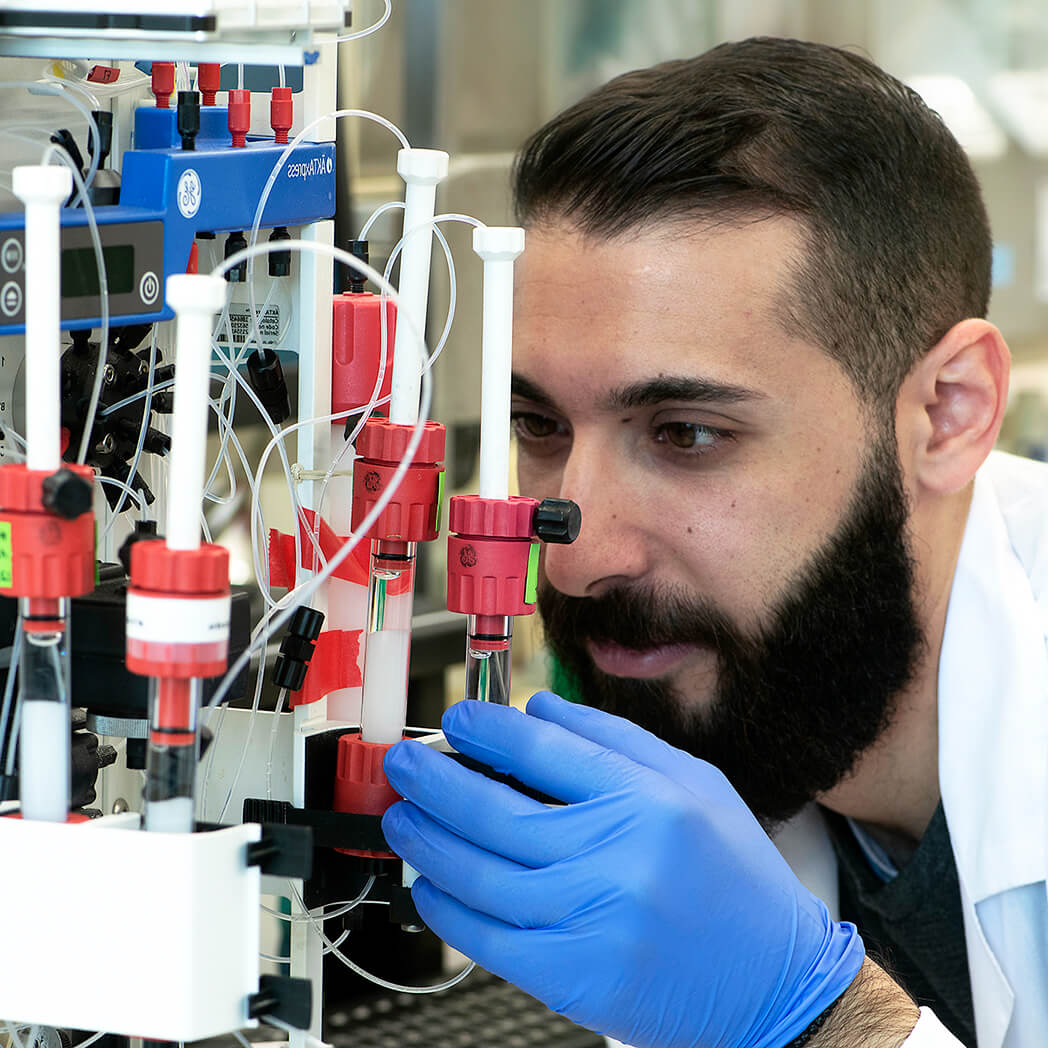Overview
Cat #:
Size:
10 g
Lot:
V100SM0110
Alternative Name Calan®, Verelan®, Isoptin®, Covera-HS®
Lyophilized Powder yes
Source Synthetic
MW: 491.1
Purity: >99%.
Effective concentration 1-250 ?M.
Chemical name α-[3-[[2-(3,4-Dimethoxyphenyl)ethyl]methylamino]propyl]-3,4-dimethoxy-α-(1-methylethyl)benzeneacetonitrile hydrochloride.
Molecular formula C27H38N2O4*HCl.
CAS No.: 152-11-4
Activity Verapamil HCl is a phenylalkylamine that acts as an L-type, voltage-gated Ca2+ channel blocker and is used in the clinic to treat hypertension1,2. Verapamil block of L-type channels is dependent on the membrane potential. The IC50 values at a holding potential of -80 or -40 mV are 250 and 15.5 μM, respectively3. In Xenopus oocytes, Verapamil inhibits L-type currents in an activity dependent manner4.
References-Activity
- Zanchetti, A. et al. (1998) J. Hypertension 16, 1667.
- Hockerman, G. H. et al. (1997) Annu. Rev. Pharmacol. Toxicol. 37, 361.
- Lacinova, L. et al. (1995) J. Pharmacol. Exp. Ther. 274, 54.54.
- Huber, I.G. et al. (2004) J. Biol. Chem. 279, 55211.
Shipping and storage Shipped at room temperature. Product as supplied can be stored intact at room temperature for several weeks. For longer periods, it should be stored at -20°C.
Solubility Up to 50mM in water, DMSO and other solvents. Mild agitation and/or warming my help dissolve the product at higher stock concentrations. Centrifuge all product preparations before opening/handling (10000 x g 5 min).
Storage of solutions Up to four week at 4°C or three months at -20°C.
Our bioassay
 Alomone Labs Verapamil HCl inhibits L-type Ca2+ currents in Xenopus oocytes.A. Time course of L-type channel (CaV1.2+α2δ1+β1a) activity before and during applications of 10 and100 μM Verapamil HCl (#V-100) and upon wash (Verapamil HCl application periods are indicated by the horizontal bars). Holding potential was -100 mV and currents were elicited every 10 seconds by 100 ms steps to -10 mV. X axis in minutes and Y axis in nA. B. Example current traces before and during applications of 10 and 100 μM Verapamil HCl (concentrations indicated are taken from the experiment described in A).
Alomone Labs Verapamil HCl inhibits L-type Ca2+ currents in Xenopus oocytes.A. Time course of L-type channel (CaV1.2+α2δ1+β1a) activity before and during applications of 10 and100 μM Verapamil HCl (#V-100) and upon wash (Verapamil HCl application periods are indicated by the horizontal bars). Holding potential was -100 mV and currents were elicited every 10 seconds by 100 ms steps to -10 mV. X axis in minutes and Y axis in nA. B. Example current traces before and during applications of 10 and 100 μM Verapamil HCl (concentrations indicated are taken from the experiment described in A).
Target L-type Ca2+ channels
Lyophilized Powder
For research purposes only, not for human use
Last Update: 30/03/2021
Specifications
Citations
Citations

